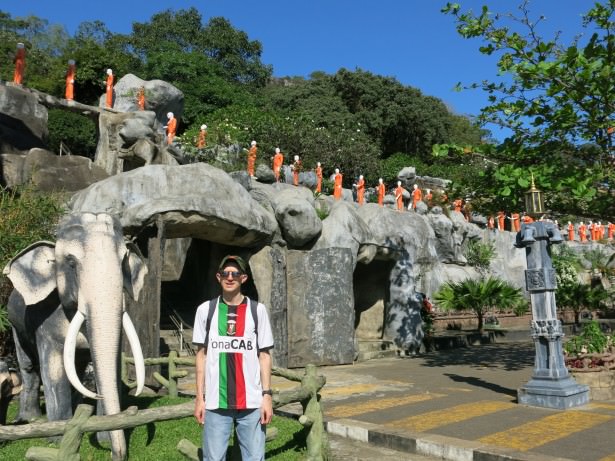The CEO of SriLankan Airlines, Richard Nuttall recently mentioned in his interview that it is the best time right now to visit Sri Lanka for a tour.
In an interview with the times of Oman, the CEO elaborated on his statement – There has never been a better time to pay a visit to Sri Lanka as the hotels have low occupancy and the Sri Lankan currency is undervalued. The government, SriLankan Airlines and all participants in the tourism industry are aligned and doing everything possible to support the return of tourism in the country in upcoming times. Undoubtedly, flight ticket booking and hotel bookings have also become cheaper in the country due to the present economic situation which is creating a booming environment for Sri Lanka tourism.
In a further statement, Richard also stated that he welcomes the Sri Lankan Government’s decision to privatize the SriLankan Airlines. As per the sources, he said “I believe that it [the privatization] will offer greater opportunities for the organization in terms of a necessary capital infusion and the efficiency of management.”
This exclusive interview included one-on-one questions with the SriLankan Airlines CEO that revealed about the future plans of the organization as well as his views on tourism at present times. Below are some excerpts from the interview:
Question 1. I have heard that SriLankan Airlines made a profit this year. Is this true? How come this was possible?
Richard:
SriLankan Airlines was in profit for the last quarter of the year, ending March 2021. The airline was also operationally profitable for the 6 months of the on-going financial year starting from April. However, given the high interest rates in Sri Lanka and the added costs of operating for a couple of months without the jet fuel in our home base, we were unable to cover financing costs.. These results are based on unaudited management accounts which are USD based. We made great efforts to minimize the costs by restructuring aircraft leases, supplier contracts and other operating expenses during the pandemic.
As a consequence, we now have a relatively efficient cost base. Further, as traffic has restarted after the pandemic, we have been very agile in adjusting the network based on demands of passengers and by distributing any spare capacity based on route profitability.
Question 2. What new routes are you planning?
Richard: Our priority right now is to restore (the airlines’) capacity to match pre-pandemic levels in markets where we have a competitive angle. In the last year or so, we have restarted Paris and Frankfurt, and we launched Incheon and Sydney. We are always on the hunt for new market spaces as the demand for commercial air travel grows at a fast pace. However, our priority at present is to increase frequencies on our current network which includes a number of countries where traffic levels are still recovering after the jolt caused by the pandemic.
Question 3. Any plans to increase flights from Muscat? What is the load factor on this route?
Richard: We might most probably maintain the same flight frequency to Muscat through the winter months of 2022 and into the year 2023. SriLankan Airlines’ passenger load factor on the Muscat route is slightly over 70% during the current year, and we will not hesitate to increase capacity if the passenger demand for Muscat increases.
Question 4. How are you handling the fuel shortage situation?
Richard: We had some challenges as jet fuel was largely unavailable in the country during the months of July and August. Anyhow, the airline’s operational departments and suppliers came together and we were able to manage most of our flights network by fuel tankering as well as tech stops to pick up fuel. Thus, maintaining Sri Lanka’s air links during the summer peak was truly an achievement for us. Unfortunately, this came at a concerning cost at a time when we needed funds to maintain and grow our fleet to meet the needs of the Sri Lankan economy during that period. The good news is that the situation has eased since then, and the Ceylon Petroleum Corporation has assured us a fast supply of jet fuel. We are now able to operate our long-haul flights without requiring any technical stops for refueling the flights.
Question 5. What are your thoughts on privatization of SriLankan Airlines?
Richard: SriLankan Airlines welcomes the Government of Sri Lanka’s decision to privatize the airline. We believe that it will offer bigger opportunities for the organization in terms of a much-needed capital infusion and the streamlining of decision-making.
Question 6. How did the economic crisis hit SriLankan Airlines this year? And how is it planning to come out of it?
Richard: Sri Lanka is currently having a major financial crisis, however its impact on our Airlines has been negligible since the airline generates a maximum portion of its sales in foreign currency coming from overseas territories. As the national airline of the country, SriLankan is duty-bound to serve Sri Lanka in this hour of need and we help by facilitating tourism and exports.
Question 7. Is the island of serendipity ready to welcome tourists despite what is happening inside Sri Lanka?
Richard: We believe that Sri Lanka’s situation was exaggerated in foreign media. There was a period for a few weeks when fuel shortages created uncertain conditions for travel, but otherwise the country has been completely safe for tourism. At present times, when hotels based in the country still have lesser number of visitors and the Sri Lankan currency has lost its value, there has never been a better time to visit it. The Government of Sri Lanka, SriLankan Airlines and the rest of the participants in the Tourism industry are duty-bound and doing everything possible to support the return of tourism in the coming months.
Question 8. Did the airline restore all its pre- COVID routes?
Richard: We have restarted flights to almost all the destinations that we used to fly to prior to being hit by the pandemic. We will be able to restore our flying capacity to 90% of our pre-pandemic capacity levels by the next financial year.
Question 9. Flights to Indian cities are very important for Muscat-based passengers. Any plans to increase connectivity with Indian cities?
Richard: India is a key market for our Airlines in regards to inbound tourism to Sri Lanka as well as transit traffic from Colombo. We are planning to increase flying capacity to India as a priority due to the growth in demand. Current demand is lower than the pre-pandemic levels, but we expect this to rebound in the coming months, with a considerable growth in the number of flights.
Question 10. Are you going ahead with new fleet procurement?
Richard: SriLankan Airlines is in need of replacing some of the older aircraft under its fleet that have imminent lease expirations. We are currently in discussions with our main stakeholder, that is the Government of Sri Lanka, which understands the need for this procurement.
Author Bio:
Dhanaraj Wijemanne is a travel blogger & destination expert living in Sri Lanka and works for local tourism companies like Arabiers Sri Lanka. If you have been looking forward to touring Srilanka, getting a visa worldwide, extending stays and exploring the city, you can follow him on social media.






